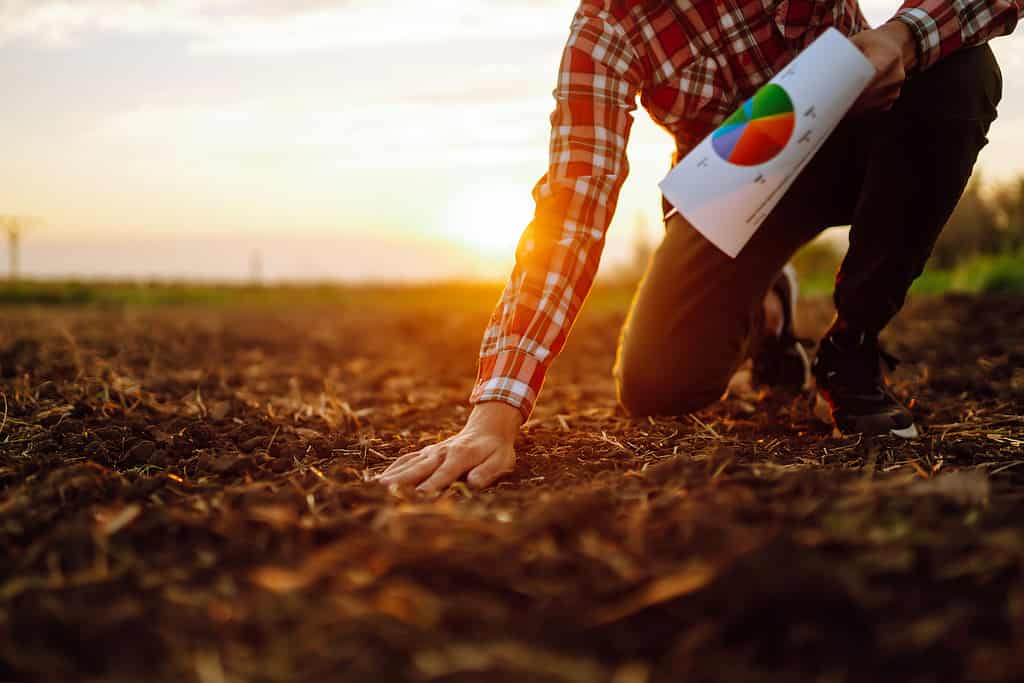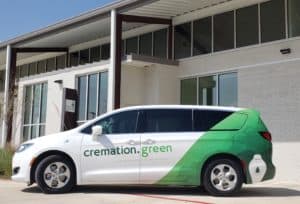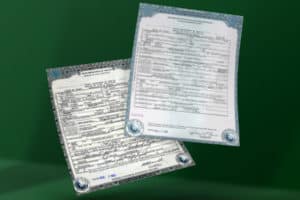If you’re familiar with the natural organic reduction process, also referred to as human composting, then you probably know that instead of cremains the family receives compost soil. But what exactly is in human compost soil?
The idea of natural organic reduction has an ick factor for some people because they imagine human remains being in the soil. The reality is, you can’t tell the difference between human composting soil and what you can buy at a gardening center. In this post we’re dispelling some of the misconceptions by breaking down the different components of nutrient-rich human composting soil that the family receives and can use on their own property.
The Microbes That Facilitate the Human Composting Process
The secret behind natural organic reduction is microbes that are added to the mix inside the human composting vessel. They allow the body to be broken down much faster than what would naturally occur by simply burying the deceased.
But what exactly are the microbes? The microbes are a combination of bacteria, fungi, and protozoa (single-celled organisms like amoebas). They are naturally occurring and found on living bodies.
The vessel is turned throughout the process to ensure the microbes are fully exposed to the body. But are the microbes still present at the end of the human composting process? The answer is yes. There is an abundance of bacteria and often fungi in all types of compost, including human composting soil.
The Human Components of Human Composting Soil
When a body decomposes it releases macronutrients, minerals and other natural compounds. This happens naturally whether the decomposition is occurring slowly after burial or at a faster pace in a human composting vessel. The compounds include:
- Carbon
- Nitrogen
- Phosphorus
- Potassium
- Sulfur
Compost testing will be needed to ensure that the pH balance of the soil is within the correct range and safe to use since these compounds and minerals are released. Some states like Washington have regulations for doing this, which need to be followed. Ideally, the pH of the human composting soil should be between 6.5 and 7.
What About Teeth and Bones?
You may be wondering about the teeth and bones that are much tougher than body tissue. Teeth and bones are made up of minerals (mostly calcium phosphate). The minerals make bones hard so that they maintain their shape and can support the body without breaking. Because of this, they aren’t broken down by the microbes in the human composting vessel.
But the minerals inside of bones and teeth can be very beneficial for the composting soil. For that reason, bones and teeth are often added to the human composting soil after the first phase when the tissue is broken down. But first the bones have to be ground up, just as they are to create the cremains a family receives after cremation. The finely ground bone material is then added back to the soil.
Non-Human Components of Human Composting Soil
Unlike cremains, human composting soil isn’t entirely composed of human components. In the case of cremains it’s only the ground up bones that remain after the cremation, which may or may not be included in human composting soil.
Plant-based materials are included in the human composting vessel to help facilitate the composting process. These materials include:
- Alfalfa
- Wood chips
- Straw
- Sawdust
Other natural materials can also be included to help the microbes break down the body. What exactly is included and how much is typically adjusted for each body.
What’s NOT in Human Composting Soil
The goal of natural organic reduction is to create nutrient-rich compost soil that gives back to the environment. The soil mixture is carefully created so that only organic materials are part of the compost. Once the body tissue has broken down and the soil forms it’s removed from the vessel so that any artificial materials can be removed. This includes medical devices, implants and metal pins.
Embalming fluid is also never going to be found in human composting soil. In order for natural organic reduction to occur the body can’t be embalmed beforehand because the fluid contains carcinogens that can be very harmful to people, animals and plants. This includes bodies that were donated for medical research because they are almost always embalmed.
Something else that isn’t in human composting soil are toxins, parasites and pathogens. Inside the human composting vessel the microbial activity causes the temperature to rise over 130 degrees Fahrenheit for a sustained period of time. This high level of heat quickly kills off almost all pathogens and parasites while also eliminating toxins and traces of pharmaceuticals. Even radiation from medical treatments isn’t detected in the soil. The possible presence of toxins and pathogens is another reason why composting soil is tested before it can be used.
However, there are a few caveats. If a radiation seed is implanted in a body it will have to be removed first and then there’s a 30-day waiting period before human composting can begin. Also, there are a few exceptions when it comes to diseases. Natural organic reduction can not be used if a person had active tuberculosis, ebola or a prion disease at death. It’s possible for these diseases to survive the composting process. In the case of ebola direct cremation is recommended because it is highly infectious even after a person dies.
At the end of the process there’s roughly one cubic yard of all-natural composting soil that can be used at a family member’s home, donated to a conservation group or simply kept. It can be used essentially anywhere to support the growth of trees, flowers, shrubs and any other type of plant.
Cremation.Green is among the few funeral homes in Texas that can help families arrange eco-friendly natural organic reduction services. If you’d like to know more about the process, please give us a call, text or email whenever it’s most convenient for you.






